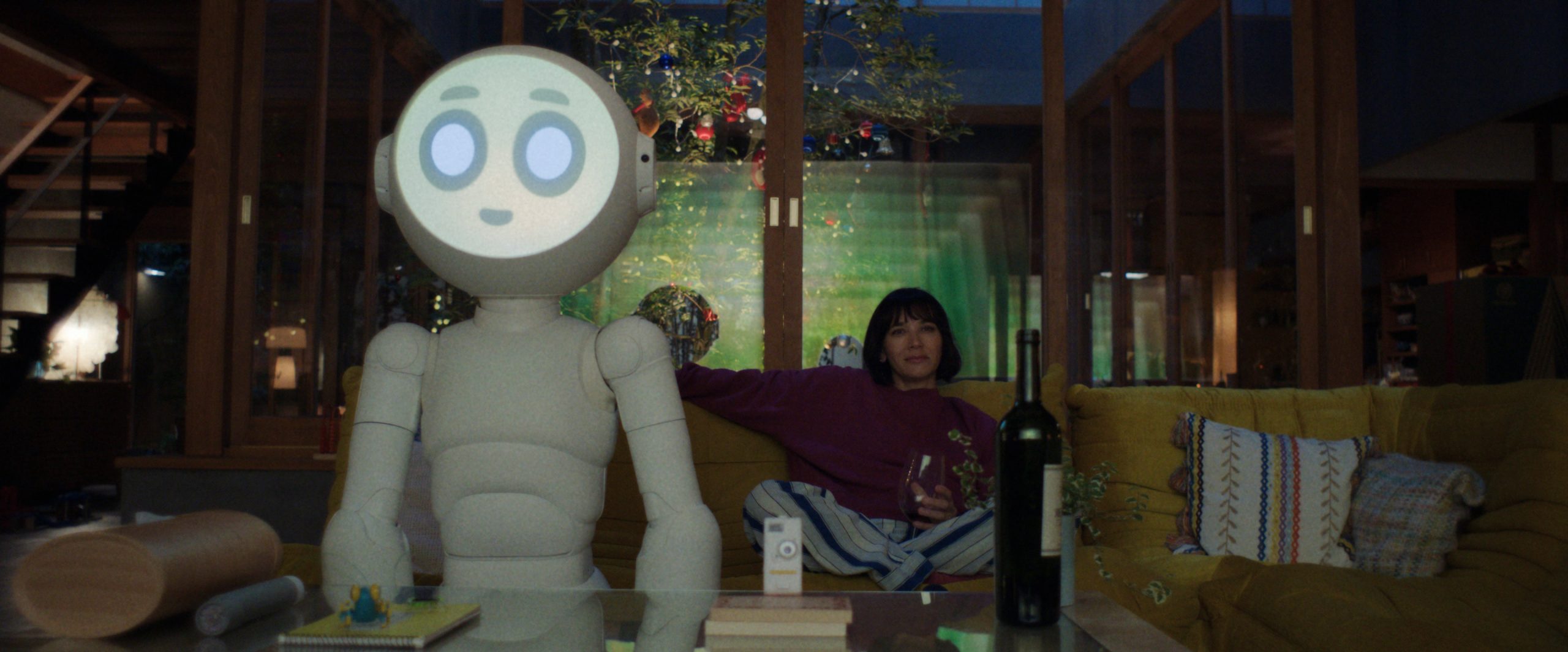
For decades, artificial intelligence served a lot of narrative purposes: a symbol of humanity’s hubris; a metaphor for God, childhood, or otherness; a cautionary tale that industry chose to ignore. Now that AI is upon us (or, rather, a crappy version of AI that doesn’t work but does threaten everyone’s livelihoods, our electrical infrastructure, and the fight against climate change), it’s beginning to feel clumsy to use it as a device to discuss other issues rather than as an issue in itself. Sunny, the new offbeat sci-fi mystery on Apple TV+, doesn’t ask any big questions about AI, nor does it pretend to. It’s a story about isolation, connection, and trauma which happens to explore those topics in part via a cute robot. Sunny has an intriguing premise, a quirky sense of humor, and the occasional profound emotional moment, but compared to something like the underrated Mrs. Davis, which offers all of the above plus an innovative exploration of humanity’s relationship with machines, Sunny doesn’t quite shine.
Suzie Sakamoto (Rashida Jones) is a misanthropic American expatriate living in a near-future Kyoto with her husband Masa (Hidetoshi Nishijima), her young son Zen (Fares Belkheir), and no friends whatsoever. Suzie is acerbic and anhedonic, having burned all of her bridges in the States and made no effort to build new ones in Japan. When Masa and Zen are lost in a plane crash, she’s left with no one for company but Masa’s disapproving mother, Noriko (Judy Ong). That is, until she receives an unexpected gift from her late husband: a chipper domestic robot named Sunny (voiced by Joanna Sotomura) who Masa programmed specifically for her. Sunny becomes the key to unlocking not only Masa’s secret life as a genius roboticist but a Yakuza conspiracy.


Sunny is a light comic mystery that orbits some very heavy subject matter. The story begins with an already deeply depressed and isolated woman mourning her child, a challenging starting point for a TV comedy. Suzie is accustomed to compartmentalizing or masking her feelings behind sarcasm and rudeness, and her issues are compounded by her cultural outsiderdom, and her mother-in-law’s accusations that she is not “grieving correctly.” It’s a grim scenario, but introducing Suzie via unthinkably tragic circumstances might be the only way to convince an audience to empathize with her. She is simply the worst, and it’s impressive that Rashida Jones was able to smother her own innate charisma so completely.
The Homebot is committed to lightening the mood, both for Suzie and the audience, as her personality has been custom-built to complement Suzie’s sardonic deflection. However, Sunny adapts to her human host. Is it only a matter of time before Sunny becomes as sour as the woman she’s supposed to cheer up? Do hurt people hurt robots, and do those hurt robots hurt people?
Sunny is a fairly successful non-human character, brought to life practically via real robotics and puppetry, Joanna Sotomura’s vocal performance, and a simple but expressive cartoon face. She’s a fantasy of artificial life as well as a useful mirror to Suzie’s character development. Her appeal as a product is undeniable, even to Suzie, who is even less fond of robots than she is of people. The ethics of manufacturing and presumably selling these sentient beings is never questioned, only the ethics of jailbreaking the robots’ software to circumvent blocks against violent or sexual behavior. Impossibly, the invention of a robotic labor class has had no noticeable impact on the labor market in future Japan. (This entirely uncritical depiction of the AI-driven future was produced by A24 but is distributed by Apple, who would sell you a Sunny tomorrow if they could.)
Sunny isn’t Suzie’s only companion in her investigation of the criminal underworld in which her mild-mannered husband was apparently involved. She also makes fast friends with an upbeat and flirtatious bartender, Mixxy (annie the clumsy). Mixxy treads dangerously close to the Manic Pixie Dream Girl trope, a cute and sexually available character with practically no life of her own who quickly devotes herself to Suzie’s cause. But, as we come to understand over the course of the season, the only way to get close to Suzie is to make her your project.
The rest of the regular cast is no less heightened but certainly more textured. Judy Ongg plays Suzie’s passive-aggressive mother-in-law Noriko, who has an inner life that Suzie has never bothered to consider. Mononynous Japanese actor You shines as Hime, an ambitious female Yakuza underboss who’s the sort of cool antagonist that half of you half want to root for. And then there’s Hidetoshi Nishijima as Masa, a role that’s only a short walk from his quietly haunted Yūsuke in Drive My Car. Masa’s flashback appearances are pinhole views into the life of a nearly unknowable man. He’s a great absent character, and the resolution to his story is ultimately satisfying.
Whether or not viewers will have the patience to reach this resolution is another matter. Like so much serialized television, Sunny sags in the middle of its ten-episode season. The weaker chapters may not provide enough incentive to get viewers to the big finale — or, for that matter, motivate them to watch a second season. Even though this first season leaves a lot of meat on the bone and closes on a note that suggests the story is not over, I wouldn’t go out of my way to watch it if and when it returns.

!function(f,b,e,v,n,t,s)
{if(f.fbq)return;n=f.fbq=function(){n.callMethod?
n.callMethod.apply(n,arguments):n.queue.push(arguments)};
if(!f._fbq)f._fbq=n;n.push=n;n.loaded=!0;n.version=’2.0′;
n.queue=[];t=b.createElement(e);t.async=!0;
t.src=v;s=b.getElementsByTagName(e)[0];
s.parentNode.insertBefore(t,s)}(window, document,’script’,
‘https://connect.facebook.net/en_US/fbevents.js’);
fbq(‘init’, ‘618909876214345’);
fbq(‘track’, ‘PageView’);





